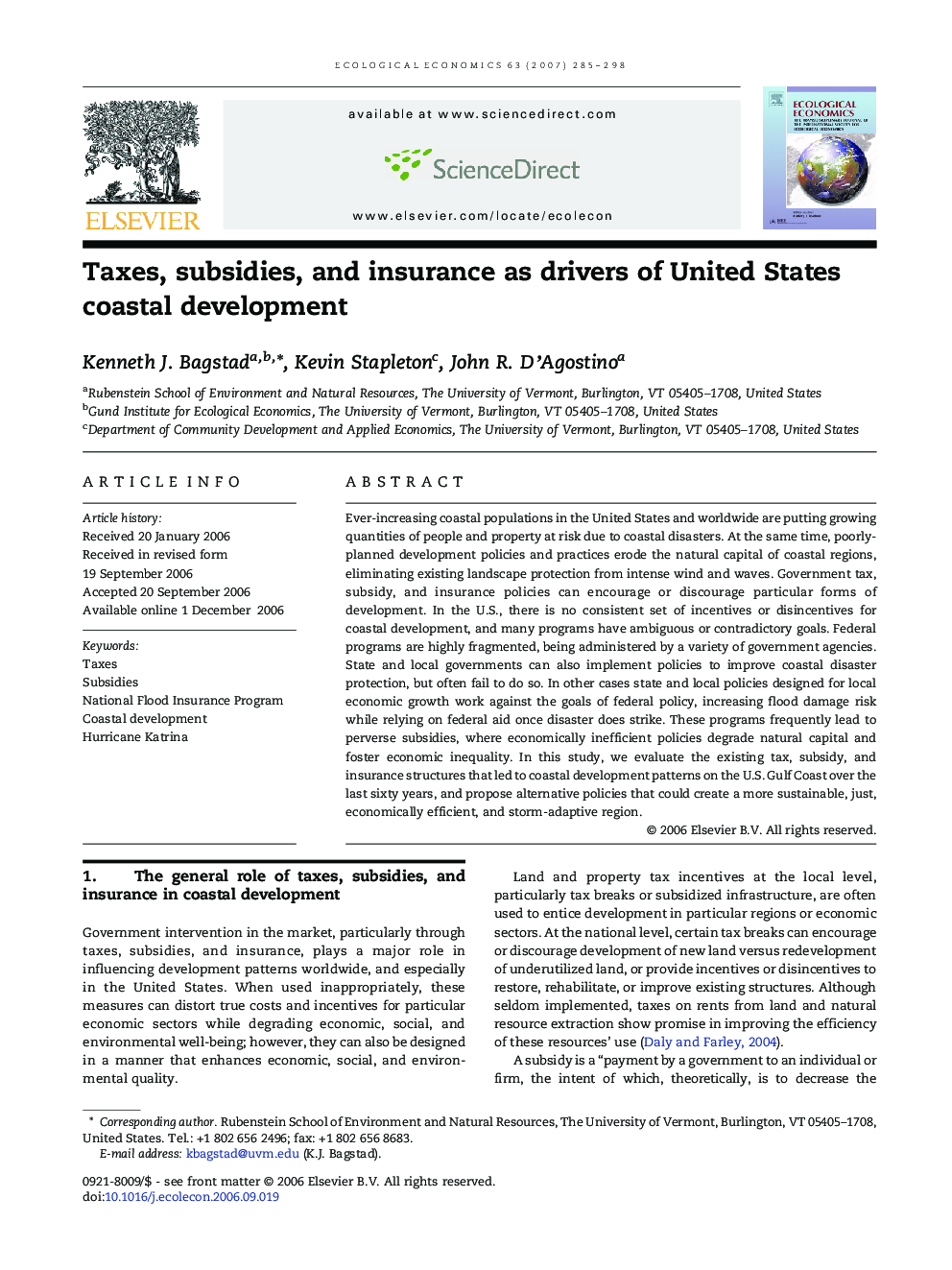| Article ID | Journal | Published Year | Pages | File Type |
|---|---|---|---|---|
| 5052181 | Ecological Economics | 2007 | 14 Pages |
Ever-increasing coastal populations in the United States and worldwide are putting growing quantities of people and property at risk due to coastal disasters. At the same time, poorly-planned development policies and practices erode the natural capital of coastal regions, eliminating existing landscape protection from intense wind and waves. Government tax, subsidy, and insurance policies can encourage or discourage particular forms of development. In the U.S., there is no consistent set of incentives or disincentives for coastal development, and many programs have ambiguous or contradictory goals. Federal programs are highly fragmented, being administered by a variety of government agencies. State and local governments can also implement policies to improve coastal disaster protection, but often fail to do so. In other cases state and local policies designed for local economic growth work against the goals of federal policy, increasing flood damage risk while relying on federal aid once disaster does strike. These programs frequently lead to perverse subsidies, where economically inefficient policies degrade natural capital and foster economic inequality. In this study, we evaluate the existing tax, subsidy, and insurance structures that led to coastal development patterns on the U.S. Gulf Coast over the last sixty years, and propose alternative policies that could create a more sustainable, just, economically efficient, and storm-adaptive region.
